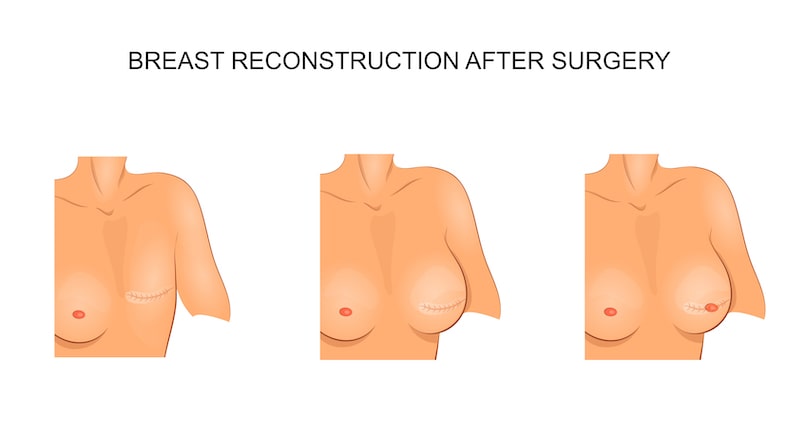Posted July 25, 2022 in Breast Reconstruction
4 Minute Read:
If you have recently undergone a lumpectomy or mastectomy and are planning to have breast reconstruction, you have a lot to think about.
The good news is you’ve taken a proactive step in your fight against cancer, and the future is full of possibilities.

You also may be considering reconstruction surgery because of an injury to one or both of your breasts. Either way, this procedure can restore your sense of self and femininity for both physical and psychological benefits.
The key to a successful breast reconstruction surgery is choosing a highly qualified surgeon who will be there to help you prepare for the procedure and your recovery.
When Will I Undergo Breast Reconstruction?
Breast reconstruction after cancer treatment can be performed in the immediate or delayed fashion. If you have already undergone your mastectomy or lumpectomy and you did not have your reconstruction performed or started during that surgery, then you fall into the delayed breast reconstruction category.
This is a very common choice for women undergoing breast cancer treatment and is often required for women who are still in the process of chemotherapy and/or radiation.
Breast reconstruction can be performed at any time after your mastectomy — there is no time limit.
Preparing for Breast Reconstruction
As with any surgery, if you smoke, you’ll have to quit weeks in advance of your procedure and be at a healthy weight. Women seeking breast reconstruction after cancer should wait until they receive a clean bill of health.
A medical history will be obtained, and pre-operative testing will be done to rule out any other health issues that might make surgery risky. You’ll also be instructed to avoid aspirin and other medication or supplements that can increase bleeding.
Preparing for Your Recovery
You’ll also have to prepare for your recovery before undergoing breast reconstruction.
Follow these tips for a smooth recovery after your surgery:
- Cook meals before your procedure and freeze them to have easy meals ready for you after surgery.
- Arrange for a ride to and from your procedure as you will not be able to drive.
- Pick up any prescription medications before you get home.
- Arrange for a friend or family member to stay with you for the first 24 hours after surgery.
- Plan for time off from work (at least two weeks), so you can recuperate fully.
Understanding the Breast Reconstruction Procedure
Breast reconstruction often includes more than one technique, which may require multiple visits to your breast reconstruction surgeon.
Breast reconstruction may include breast implants, natural tissue flaps, or a combination of both.
General anesthesia will be administered when you undergo your post-surgical reconstruction procedure.
Breast Reconstruction With Implants
Breast implants are used alone or in combination with tissue flaps to restore the breast mound after mastectomy or lumpectomy.
While this procedure is very similar to traditional breast augmentation in theory, there are some additional steps that must be taken before the implant can be placed.
During most mastectomy cases (either unilateral or bilateral), breast tissue and fat is removed to ensure that all cancer cells are excised. Because of this, there is no longer a breast pocket, and the surrounding skin is so taut that it will not be able to hold an implant.
Therefore, the skin must be stretched with a tissue expander. This will prepare the skin and remaining tissues for the permanent implant.
Tissue expanders are placed in the chest and filled gradually. Once the skin and tissue has been stretched to the appropriate amount, the expander will be removed and the permanent implant inserted.
Once you have healed, the nipple and areola can be recreated to achieve a natural appearance.
Breast Reconstruction With Tissue Flaps
Tissue flaps can also be used to reconstruct the breast alone or with an implant.
With this technique, tissue is often taken from your back near the shoulder blade (known as the latissimus dorsi flap), the lower abdomen (DIEP flap), or the abdominal muscles (TRAM flap).
This tissue is tunneled under the skin to create a new breast.
Fat transfer and liposuction treatments can be added for additional breast contouring and correction.
Breast Reconstruction in Baton Rouge, LA
If you want to learn more about your breast reconstruction options and live near Baton Rouge, Louisiana, call Ghere Plastic Surgery today.
Dr. Mary Ghere is a well-respected, board-certified plastic surgeon dedicated to helping her patients achieve the best results possible to restore not only their breasts but their sense of self.
She also performs breast revision surgery for women unhappy with a previous procedure and a wide variety of breast enhancement services.